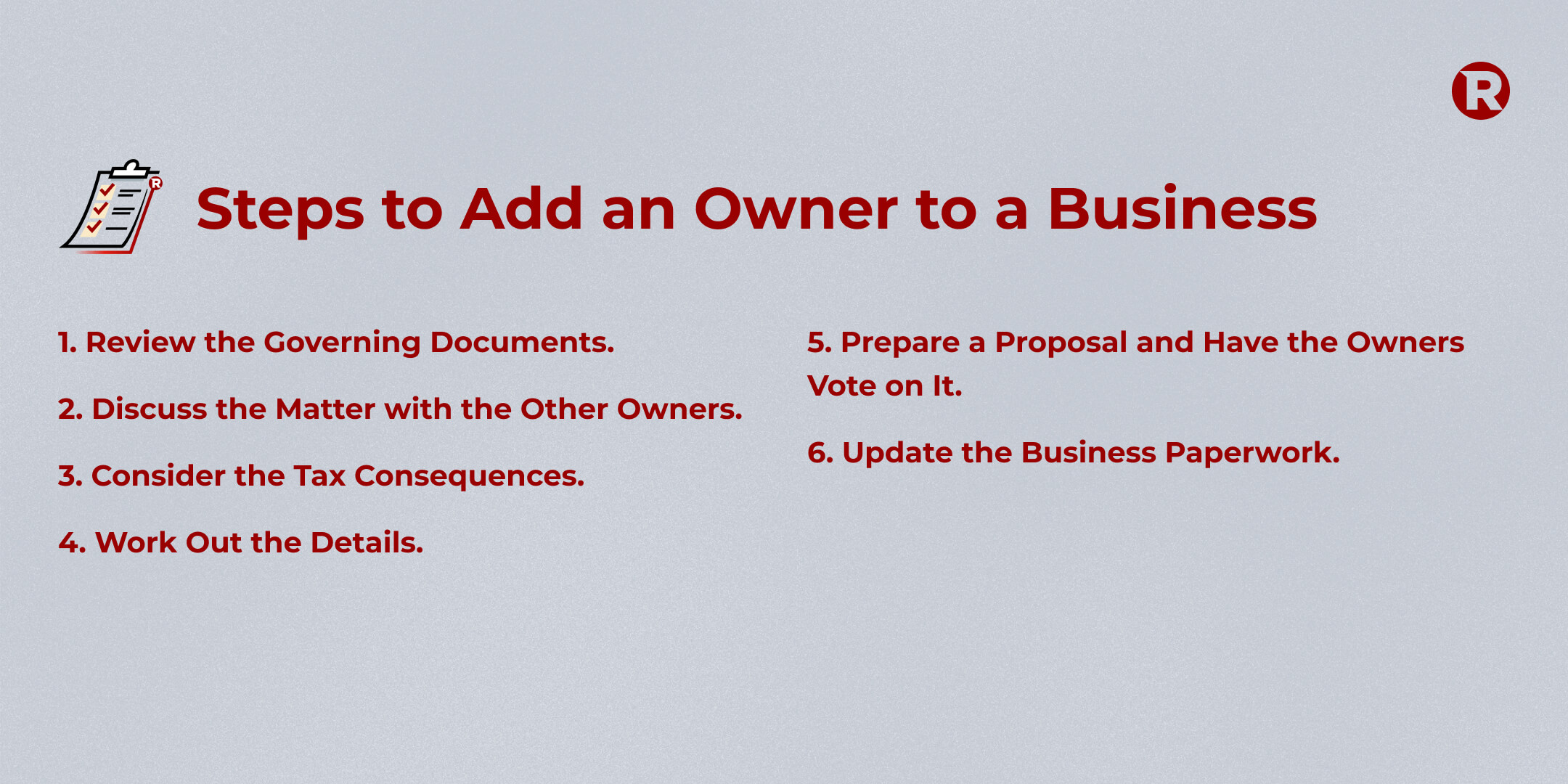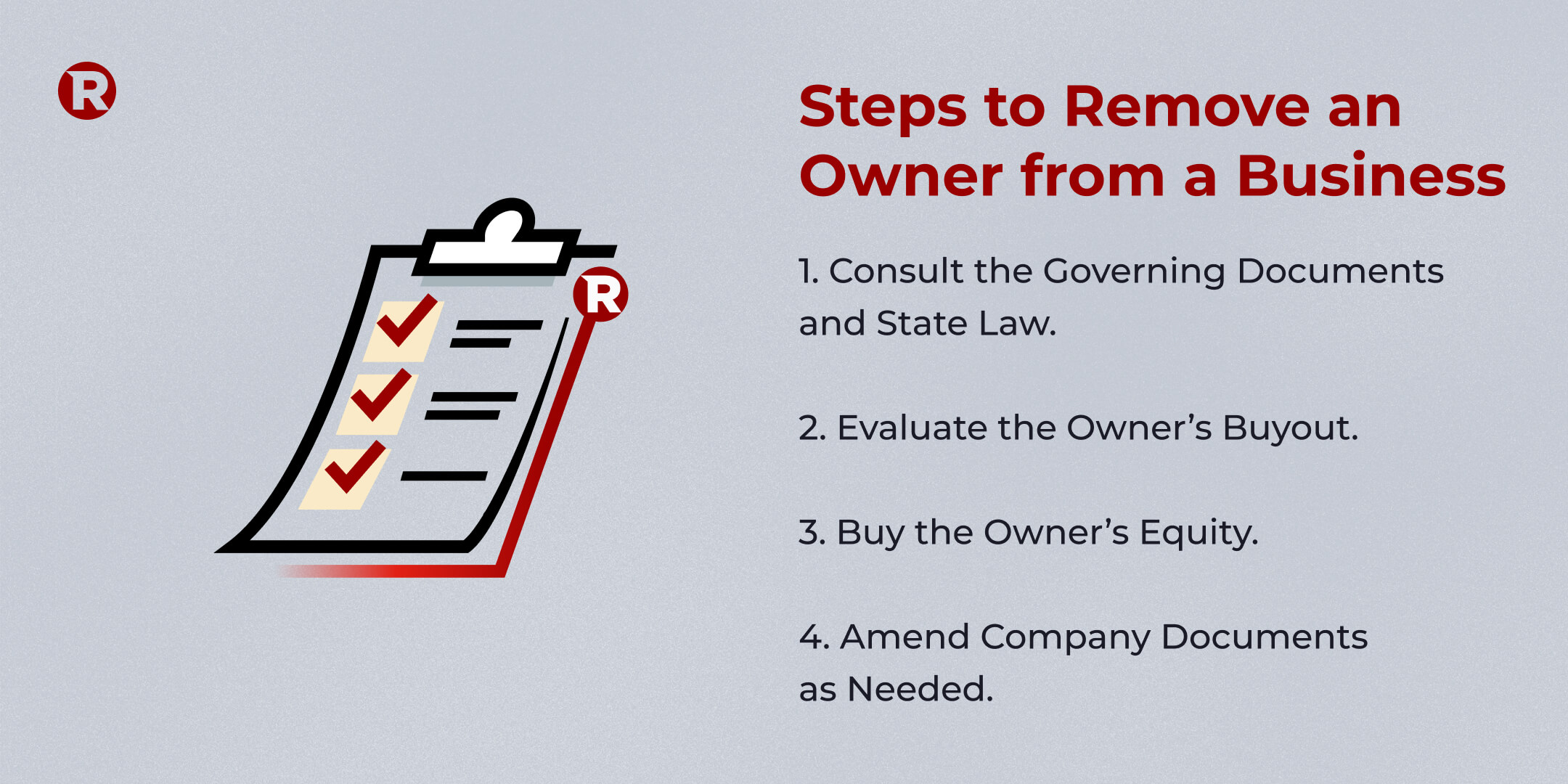How to add or remove owners from your business
Learn how to add or remove business owners and follow your company’s governing documents to handle ownership changes properly.

Adding or removing a business owner often requires the other owners to vote. A new owner then buys into the business, or the business buys an owner out.
Starting a small business can be a solo venture or a group effort. Both options have benefits and drawbacks. A business may decide to add more owners, or it may need to remove one or more existing owners. The business’s governing documents should outline procedures for doing this. A Limited Liability Company (LLC), for example, may have an Operating Agreement that the owners can consult.
Why Add or Remove a Business Owner?
Running a business on your own has some advantages. You make all the decisions and keep all the profits. At the same time, all of the decisions fall on you, and if you need a break, there may be no one to cover for you.
A business with multiple owners may offer benefits like diverse skill sets and a division of labor. No single owner has to keep everything running. The drawbacks include sharing profits among multiple owners and needing to hold meetings and votes for major decisions.
Reasons to add an owner to an LLC or other company might include:
- Bringing in a partner with helpful skills, knowledge, or contacts.
- Giving an investor part ownership in exchange for funding to grow the business.
A business might need to remove an owner for reasons like:
- The owner wants to leave the company and take their share.
- The other owners no longer want to work with them and vote to buy them out.
- The business cannot continue to do business with an owner for legal reasons, such as a conviction for fraud or loss of a professional license.
How to Add an Owner to a Business

Adding new owners to a small, single-member LLC can be fairly straightforward. If a company has multiple owners, it can be more complicated.
1. Review the Governing Documents
An LLC’s Operating Agreement addresses issues like admitting new members. In a corporation, the Bylaws outline how to bring in new shareholders. Partnership Agreements may define how to add new partners. If a business’s governing documents don’t address this issue, state law may provide guidelines.
Even if you’re the only owner, it’s important to follow the procedures that apply to your situation. You may want to document every step of the process in case there’s ever a dispute with the new owner.
2. Discuss the Matter With the Other Owners
Before discussing things with the proposed new owner, it might be a good idea to talk to the other owners first. You will probably need to vote on whether to allow this person to join. It helps to know where the other owners stand as early as possible.
3. Consider the Tax Consequences
Adding more owners to a Sole Proprietorship, for example, can change how your business files and pays taxes. An accountant can explain how your plan might affect your business taxes.
4. Work Out the Details
Now you’re ready to negotiate with the proposed new owner. Certain types of business structures offer more flexibility than others. LLCs can allow creative ownership structures. Corporations, on the other hand, are often more limited by state business laws. A new owner typically contributes capital in exchange for shares of the company.
Issues to discuss include:
- The new owner’s share of ownership.
- The amount and type of capital they will contribute.
- The voting or decision-making authority they will have.
- Their role in the business’s day-to-day operations.
5. Prepare a Proposal and Have the Owners Vote on It
Next, prepare a proposal that outlines the new owner’s investment, equity, and role. The other owners can vote on it, following the procedures in your governing documents.
6. Update the Business Paperwork
It might be necessary to update certain governing documents. For example, you might need to update your Operating Agreement and Articles of Organization. If you are converting a single-member LLC to a multi-member one, you will also need to file a form with the IRS.
How to Remove an Owner from a Business

The process for removing an owner is similar to admitting a new one. One key difference is whether the owner wants to leave or if the other owners are voting to remove them. This can make things more difficult.
1. Consult the Governing Documents and State Law
The Operating Agreement or a similar document should address this issue. If not, consult state law to see what you must do.
2. Evaluate the Owner’s Buyout
A new owner brings money or other assets to the business. A departing owner usually expects to receive their share of the business’s equity. Depending on the size of the business, this process can be complicated. You may need to consult with an accountant to learn more.
3. Buy the Owner’s Equity
After the removal is approved, the departing owner may expect payment. The business might buy their equity, or the other owners might buy the departing owner out directly.
4. Amend Company Documents as Needed
As with adding new owners, removing an owner might require amending a company’s governing documents. Visit our Articles of Amendment page to get the tools and guidance you need to update your business properly.
Adding or removing an owner is a big decision—and getting the process right is essential for protecting your business and staying compliant with state requirements. If you’re ready to move forward or have questions about the next steps, connect with a Rocket Legal Pro for personalized guidance tailored to your situation.
Key takeaways
|
Additional resources
Learning how to enforce a contract is just one step. Explore these additional topics to learn more and take the next steps.
Disclosures
- This page offers general legal information, not legal advice tailored for your specific legal situation. Rocket Lawyer Incorporated isn't a law firm or a substitute for one. For further information on this topic, you can Ask a Legal Pro.